Global climate change is increasingly causing large-scale floods in many parts of the world every year. The leading cause of the extensive damage is levee failure. Regular levees are simply earthen embankments, so they cannot withstand rising and overflowing river waters.
Implant Lock Levee utilises Implant Structure, which involves installing two rows of steel sheet piles and building a "bulkhead" inside the earthen embankment, making the levee stronger. In addition, construction can be done quickly and in a space-saving manner, without impacting the surrounding traffic and living environment, by simultaneously using multiple units of the SILENT PILERTM press-in machine and GRB SystemTM, which does not require temporary work.
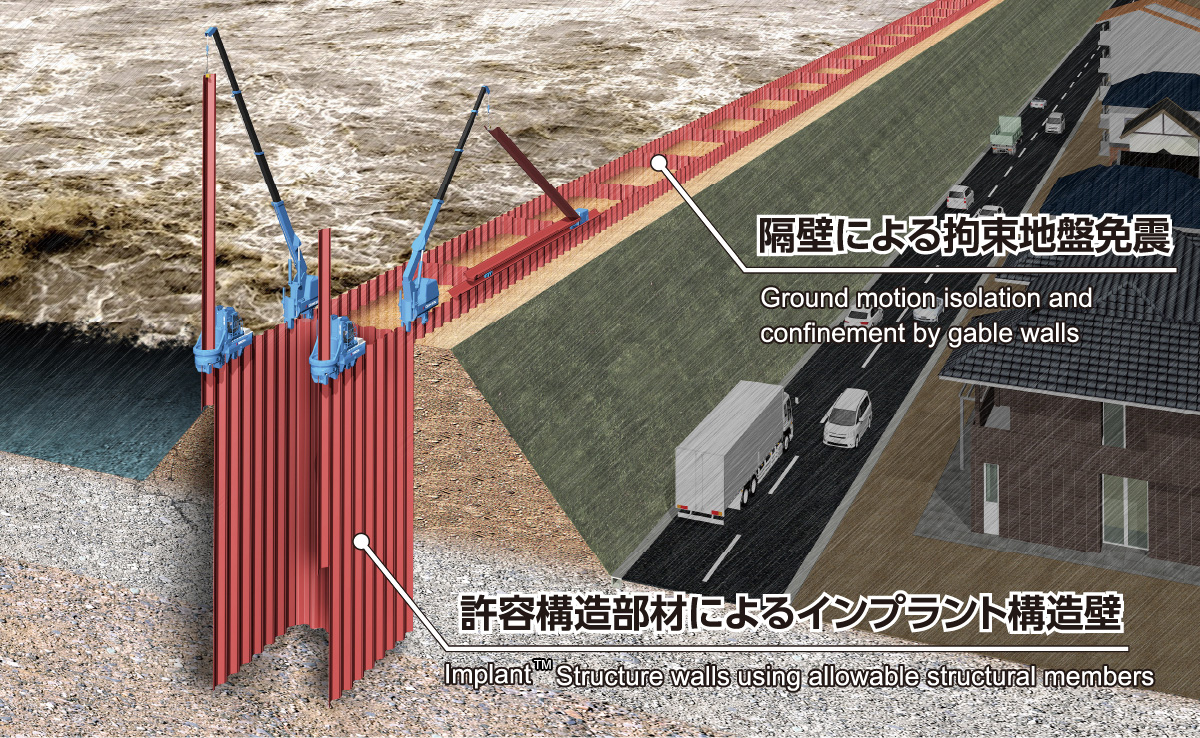
Causes of Levee Failures
Article 19 of Japan's River Management Facilities Structure order issued in 1976 stipulates that "levees shall be built using embankments". There is a rule that nothing other than soil should fill the embankment, and this is referred to as the "earthen embankment principle".
However, it is self-evident that soil saturated by water becomes weak, and the strength of the embankment decreases due to overtopping, infiltration, and erosion as a result of increased water levels, leading to structural failures.

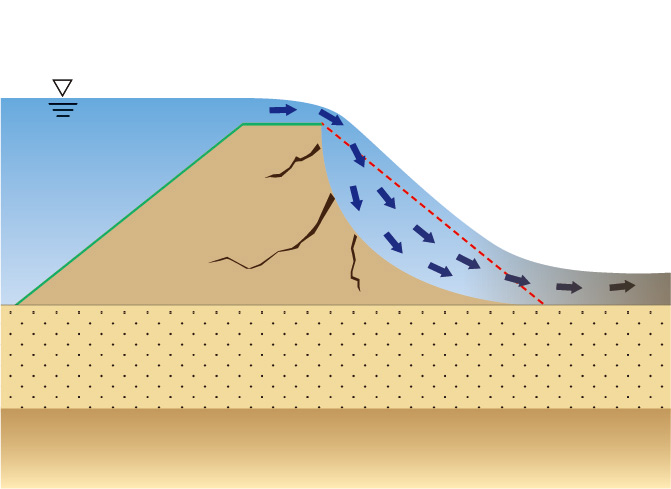
Overtopping failure
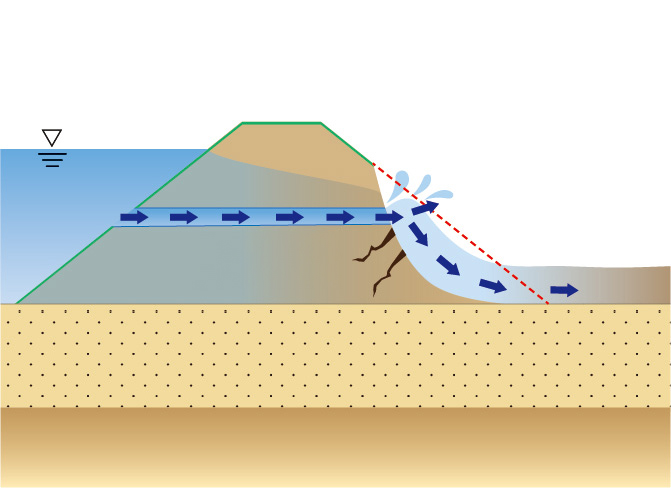
Seepage failure
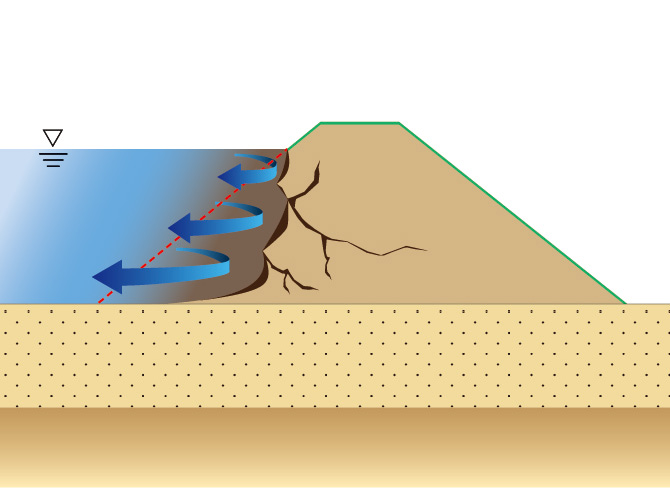
Erosion failure
Earthquake-Resistant Implant Lock Levee
The Implant Lock Levee prevents levee failure by maintaining the functionality of the levee, even when its embankments are eroded by overtopping or water seepage. In addition, in the event of an earthquake, the ground surrounded by the two rows of sheet steel and bulkheads is constrained (constrained ground seismic damper), suppressing the movement of liquefied ground and controlling ground subsidence. A major feature of this levee structure is the fact that it is designed to withstand failure in the event of a large earthquake, in addition to withstanding the ill effects of overtopping and water penetration.
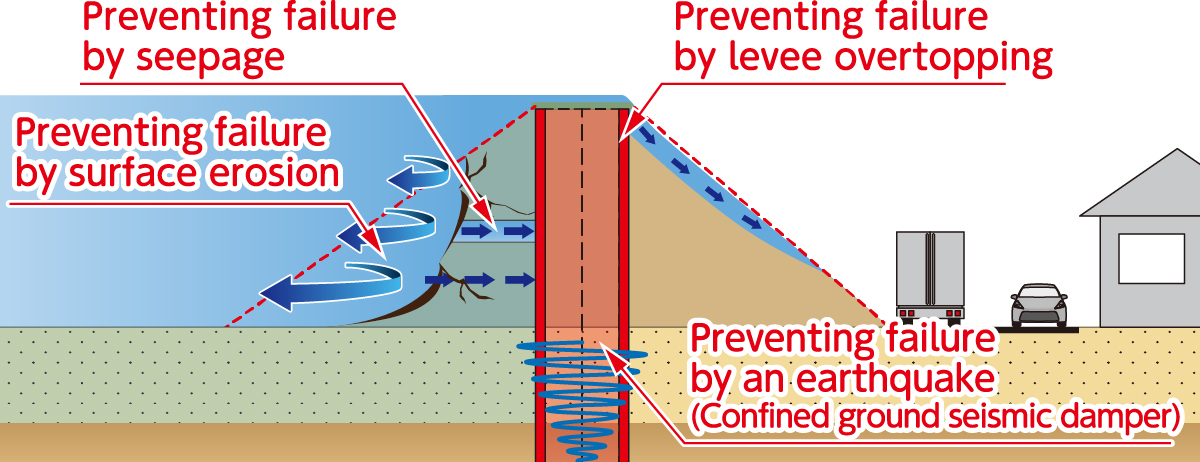
Explanation Through Models – Implant Lock Levee
We use computer graphics and models to visually explain the causes of earthen embankment failures as well as the structure of the Implant Lock Levee and what makes it superior to regular levee structures.
Usage Examples
Kochi Coastal Embankment Improvement Work – Nino Construction Zone (Kochi City, Kochi Prefecture) / Kochi Office of River and National Highway, Shikoku Regional Development Bureau, Ministry of Land, Infrastructure, Transport and Tourism
There are no use examples for river embankments because such a structure is prevented by the "earthen embankment principle". However, the structure has been adopted for a portion of the Kochi Coastal Embankment Improvement Work.
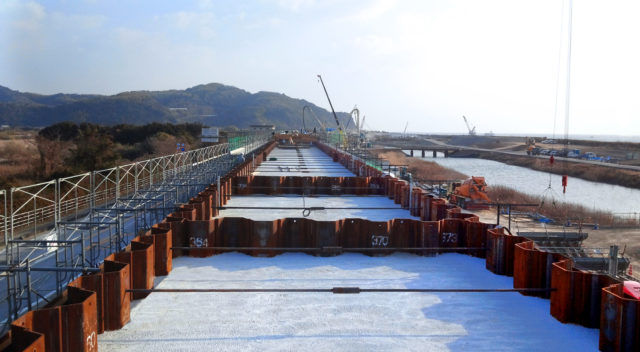
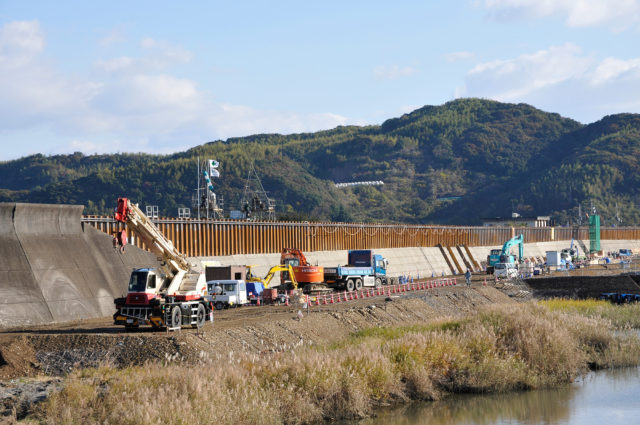
Orikasa, Yamada Town, Shimohei-gun, Iwate Prefecture
At the time of the Great East Japan Earthquake (2011), a similar structure was used as a temporary coffering for the construction of a tide gate near the mouth of the Orikasa River in Iwate Prefecture. While the surrounding river embankments were breached and the residential area was devastated, the twin sheet pile walls and the under-construction tide gate within the structure showed almost no traces of the tsunami. This incidentally demonstrated the structure's high earthquake and tsunami resistance performance.

Under-construction tide gate was protected (left), whereas Orikasa District was devastated (right)
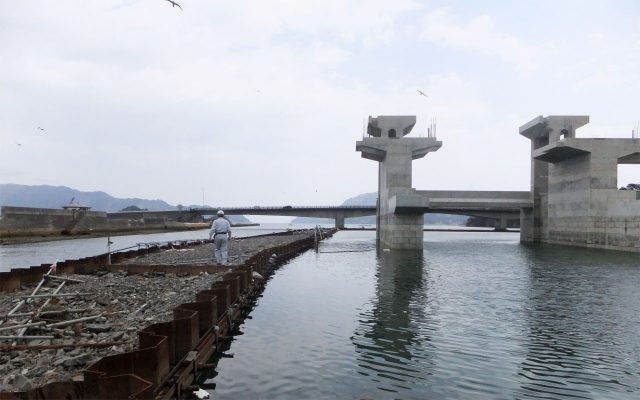
Although only a temporary construction, the twin sheet pile walls withstood the earthquake motion and subsequent tsunami
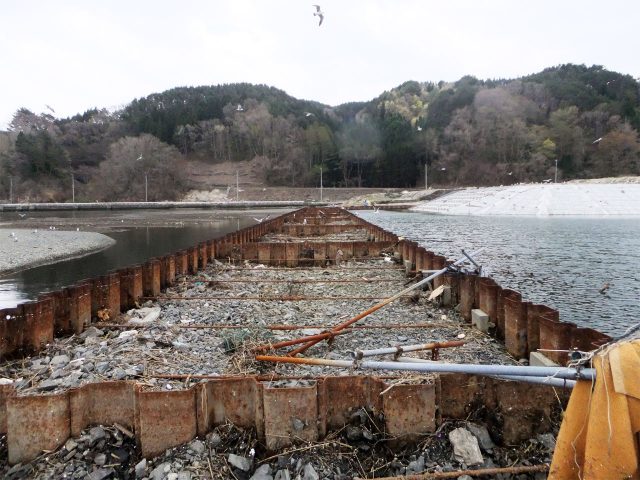
Surface-level fill was washed away, but the skeletal structure barely sustained any damage


